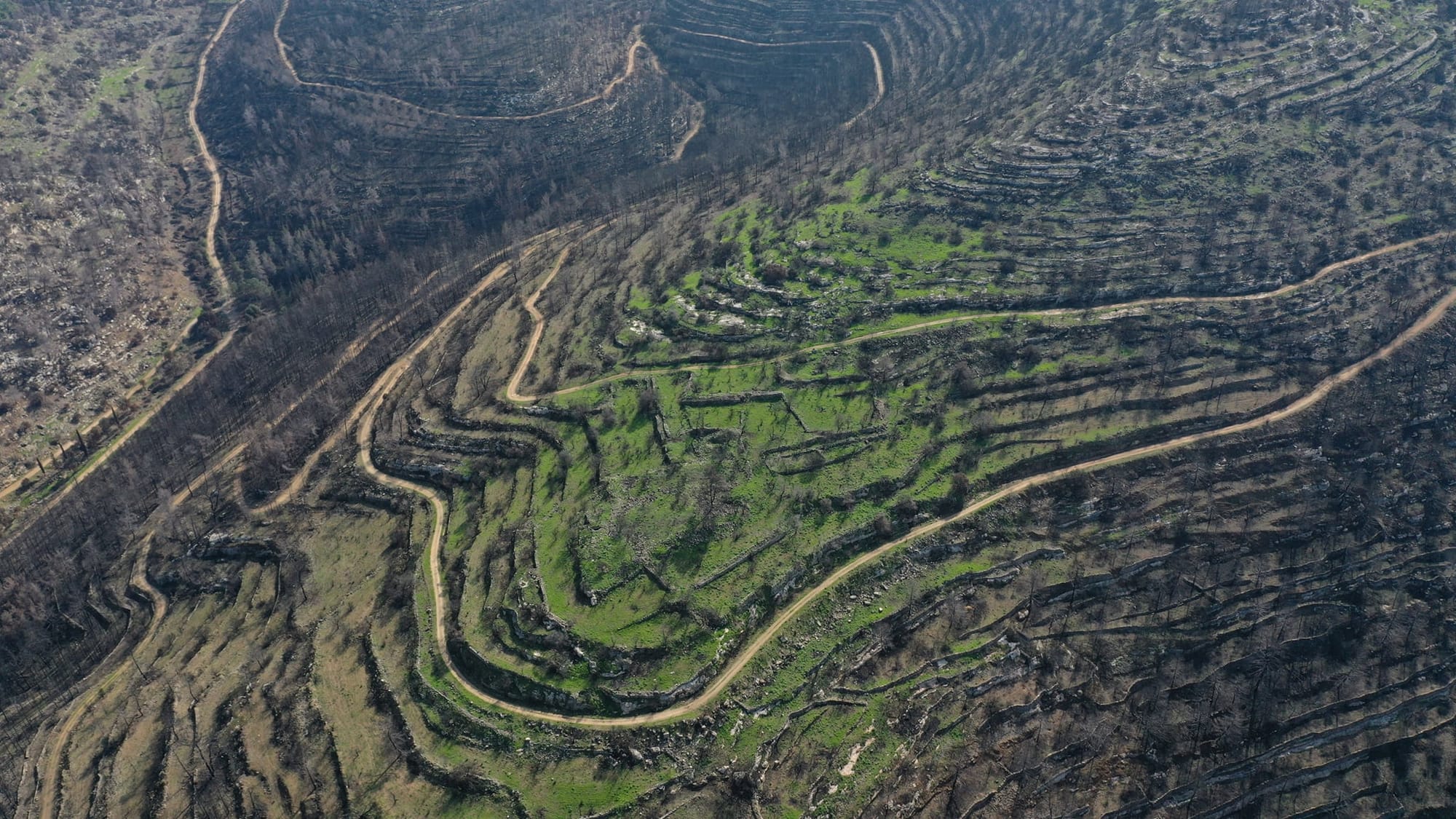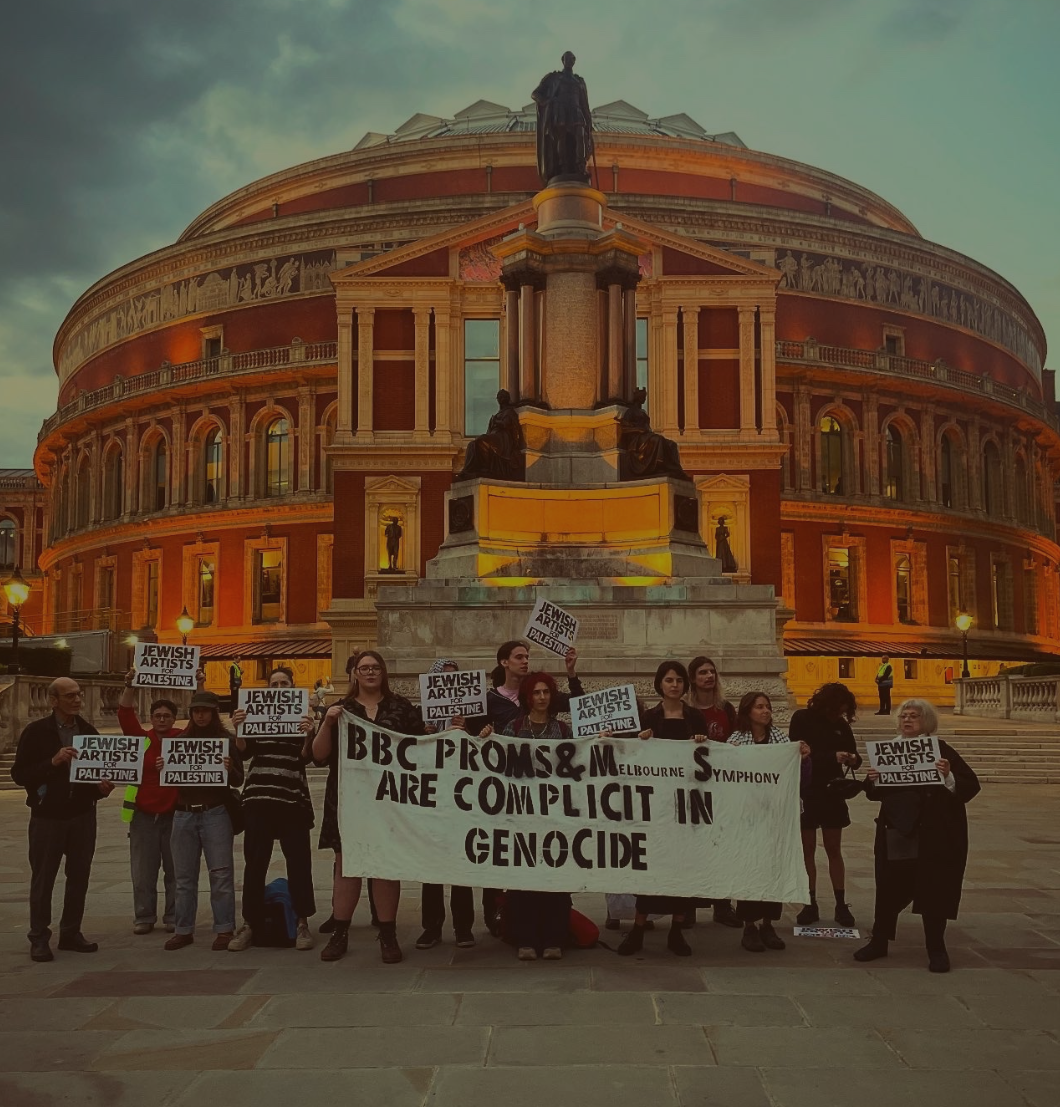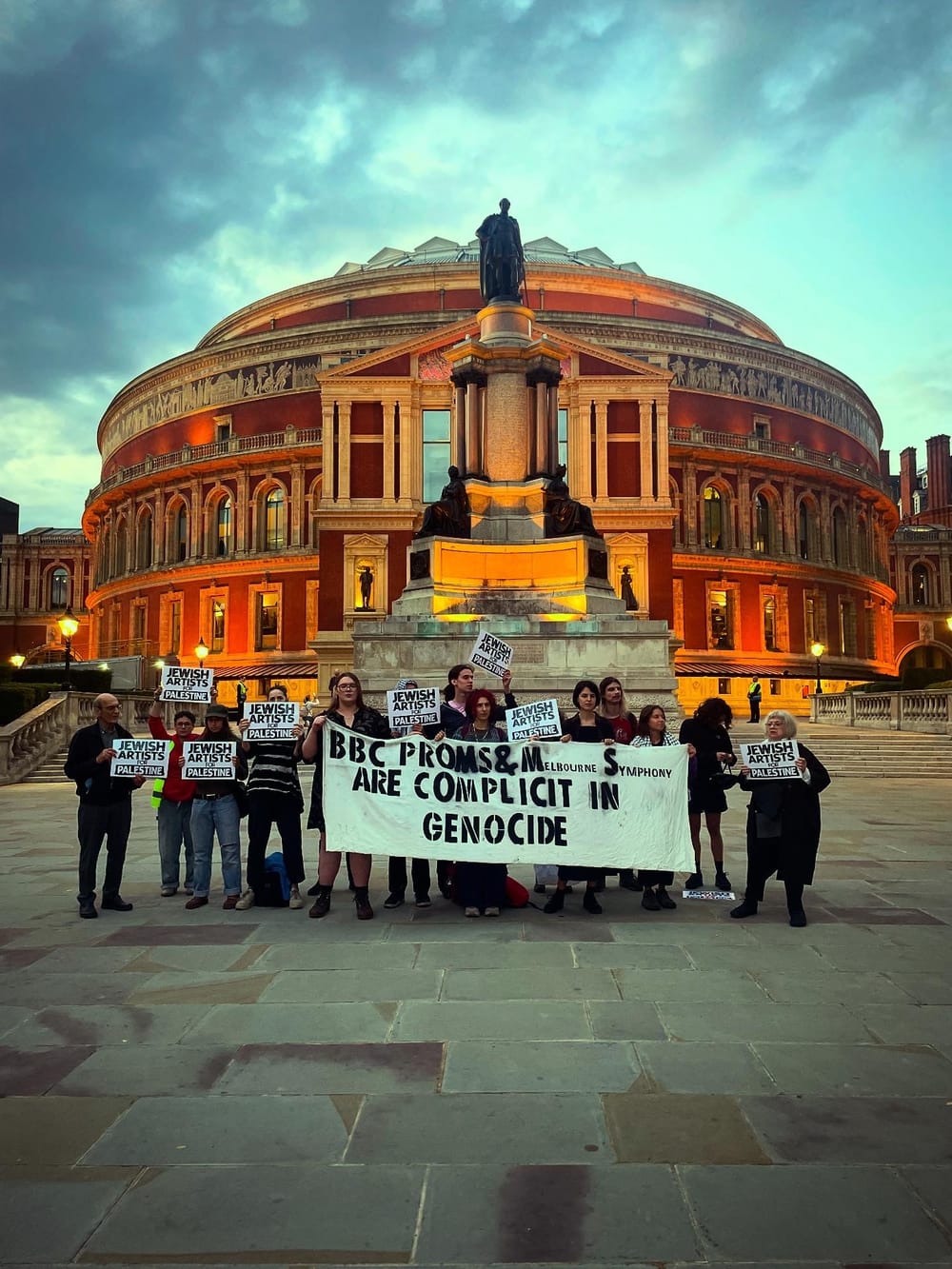
In a short clip circulating online, a man in a neon yellow firefighter jacket stands in the middle of a burnt forest, full of trees turned to char. He holds a large Israeli flag in his hand. The man thrusts the flag into the blackened earth, firmly planting it in the ground, and as he does so he declares, “where they burned, we will plant and rebuild.” The clip was created and shared by the official Facebook page of the Keren Kayemet L'Yisrael (KKL) – the Israeli arm of the Jewish National Fund – the day after the massive forest fires which forced the cancellation of Independence Day celebrations throughout Israel.
The fires, potentially the largest in the country’s history, burned over 20,000 dunams across the Jerusalem Hills. For years now, as Israel’s fire season approaches (each year a little earlier than the last), Israeli politicians, media, celebrities, and run-of-the-mill racists pull out the same lie from the blood libel drawer: it’s the Arabs. Videos taken years ago in Italy were circulated last week by third-tier journalists as supposed footage of Palestinian arsonists caught in the act – before being picked up and distributed as news by Channel 13. Knesset Member Aryeh Deri, the head of the Haredi Shas party, called for the army to assassinate would-be arsonists with drones. Meanwhile, Netanyahu jumped at the chance to pull out the oldest and dustiest colonial tropes during his national address: for Israelis, it comes as second nature to “love and protect” the land, while the Palestinians “who may claim to love this land… are talking about burning it.”
This lie has been circulating for years – and yet for all the major fires of the past couple of decades, exactly zero Palestinians have been charged with arson. Nonetheless, broader and broader swathes of Israeli society repeat the mantra “arson by Arabs!”, while politicians continue to escalate their rhetoric. And so the lie spreads again, not unlike flames in a field of dry thistles. But in a way, they have a point. The extreme fires we have experienced in the past few years are connected to the Palestinians – just not in the way they think.
These fires, in fact, are a direct result of Zionism’s settler-colonial enterprise. Netanyahu may profess to “love the land” to high heaven, but it is the ongoing erasure and destruction of the indigenous landscapes, first begun by Israel’s founders, that lit these fires. If there is an arson culprit anywhere, it’s Zionism.
Pines, pines, everywhere
Whether in the Jerusalem Hills, the Carmel, or Modi’in, all major forest fires of the past 15 years have had one thing in common: they grew to massive proportions due to burning through planted, non-native pine forests. While pine trees are native in small numbers to specific regions of the Carmel and Galilee, the origins of the vast “Jerusalem Pine” forests in Israel today reveal quite a different story. Brought to the land by British colonialists and Zionist settlers, the pines were planted extensively by the KKL, creating unbroken monocultures. The fast-growing trees were a useful tool during the Yishuv or initial settlement period for seizing land that had been cultivated by indigenous Palestinians for generations.
These new pine forests reminded the early Zionists of the forests they knew from Europe, and – like other colonial enterprises such as draining the Hula marshes – were seen as bringing enlightened trappings to a backward and desert land. After the Nakba, the pines were put to use in covering up the evidence of mass destruction and ethnic cleansing; forests were planted on the sites of at least 75 destroyed Palestinian villages.
“Jerusalem Pines” were planted up until the 90s, and the KKL continues to plant other non-native pine species today. In the traditional Bedouin grazing lands that strew the Negev, the same pre-state colonial tactic of tree-planting is once again being employed to appropriate new territory and exclude the indigenous population, with the convenient emergence of vast new “forests”.
Yet what the pine-planters failed to consider is the ecology of the trees themselves. Pines, it turns out, are quite flammable. They grow quickly and sprout new shoots, while simultaneously dropping millions of needles – creating a fuel load ready to combust. Worse still, their pinecones are miniature fire bombs, exploding when lit and sending sparks to new unburned areas. When densely planted in unbroken monocultures, an explosive forest fire is just a matter of time.
Over the past decade, in response to devastating wildfires, Israeli forestry managers have begun to recognise the dangers arising from pine monocultures. Recent forest management instructions call for the planting of native trees and the thinning of existing pine forests. But it’s too little, too late: the Zionist effort to reshape the land in Europe’s image has created a massive wildfire factory.
The black goat
Beyond introducing foreign species to the landscape, the settler population sought to rid the land of any trace of what had existed before. Prior to the Nakba, the area of the Jerusalem Hills that last week’s fires tore through was heavily populated, with many villages spread across the landscape. Indeed, the expansive "Ayalon-Canada" forest, planted by the KKL in 1972 and now nearly entirely burnt to the ground, had already suffered two waves of devastation, albeit of another kind, in both 1948 and 1967.
Beneath the remains of its trees may be found the ruins of four Palestinian villages: approximately 6,000 people once lived, farmed, and played there. With olive groves, fruit orchards, fields of grain, terraced farms and vegetable plots aplenty, the Jerusalem Hills were quite productive. Farming of course required constant management: weeding, plowing, clearing brush, removing dead limbs, and so on. Today, when you visit Palestinian agricultural towns in the occupied West Bank, you can still see how, for example, olive groves are kept clean and tidy, with few bushes in between the trees, and excess limbs or shrubs removed and burned safely on a yearly basis.
These management practices reduce the fuel loads, so that even when fire does inevitably come, it is contained and does not reach devastating proportions. When Palestinians were expelled during the Nakba, these land management practices which maintained the functionality of the entire ecosystem were broken and eradicated along with them.
Even areas not directly cultivated were extensively managed. Shepherds would graze their flocks on much of the forest lands, and the voracious appetite of goats and sheep meant that most of the flammable plant material was eaten away, making it impossible for large fuel loads to accumulate. Foraging for wild plants – such as sage and za’atar – achieved a similar effect, albeit on a smaller scale. Before British colonisation, Palestinian villagers would also harvest forest wood directly for heating, building, and other uses. As with agriculture, these management practices disappeared from the landscape when the indigenous population were forced elsewhere.
Yet, for Israel, expelling the people was only part one. In order to ensure that this connection to the land was well and truly lost, the new state took steps to prohibit Palestinians who remained inside its borders from practising their stewardship of the land. In 1950, the new state passed “the black goat law”, banning the grazing of indigenous Palestinian goat breeds – known as “black goats” in Hebrew – in forests and public lands.
Then in 1977, sage, za’atar, and other traditionally-foraged plants were deemed “protected” plant species; their harvest punishable with hefty fines. These efforts to finalise the removal of Palestinians from their lands were articulated by the Zionists as necessary in order to “protect” the beauty of the natural landscape from the strange customs of the indigenous Arabs and their black goats.
Today, state agencies are attempting to back away from these policies. Study after study has “rediscovered” the critical importance of grazing in the Mediterranean landscape both for fire prevention and general ecological health. In 2019, Israel’s Parks Authority loosened restrictions on the harvesting of za'atar, sage, and other traditional plants (though it has not fully stopped prosecuting Palestinians, including young children, for foraging). The “black goat law” was finally repealed by 2018. In fact, in recent years some Israeli forest managers have begun following studies’ recommendations to employ Palestinian shepherds to graze their flocks in national parks and forests as a preventative measure against wildfires.
Wildfires as a symptom of settler-colonialism
Across the world, we are witnessing increasingly devastating wildfires. Much of this is due to the climate crisis, and our collective insistence on watching the world, quite literally, burn. But there’s another truth hidden here: these megafires (and perhaps the climate crisis itself) are a symptom of ongoing settler-colonialism. Lands that were once managed by indigenous peoples – many of whom understood fire well, and were skilled in using it to clear brush, open forests, and create healthy habitats – have now been cleansed and left empty, their populations either exiled or exterminated.
In their attempt to erase these indigenous relationships to the earth, settler-colonial states from North America to Australia have managed to usurp not only the physical land but the very imagination of that land. Under settler-colonial rule, the relationship between people and the land they live and work on is no longer a mutual and thoughtful one – but rather takes the shape of people controlling the land, forcing it to bend to their whims, with no thought or regard for the outcomes. Today we are reaping those fruits in the form of a dying planet and a severed relationship with the people, animals, and plants around us.
It is no coincidence, then, that Israelis rush to blame imaginary Palestinian arsonists for the fires. It fits in very nicely with the logic of the settler: if the natives destroy the land, then we, the settlers, are justified in taking it over. And if we, the settlers, made the land bloom by planting beautiful European trees fit for our civilised sensibilities – well then it can’t possibly burn because of us; it just has to be arson by the natives hell-bent on destroying everything good we’ve done.
And so the cycle continues, from one fire season to the next.
The fires have their own story to tell, though. When the smoke settled over the hills of Jerusalem after the great fires of August 2021, under the skeletons of burned pine trees, networks of beautifully preserved terraces were revealed. Lines and lines of them, up and down the hillsides, a haunting reminder of the people who lived here and are no longer, of their ancestral traditions, of the landscapes they knew and understood. Perhaps in that revelation there appeared a seed of something else, too – a glimmer of a different future, full of goat herds and sage leaves, the possibility of a people returned to their land, and the land returned to its sacred place.▼
Eli Philip is a Jerusalem-based community activist and birder.
Author
Eli Philip is a Jerusalem-based community activist and birder.
Sign up for The Pickle and New, From Vashti.
Stay up to date with Vashti.



